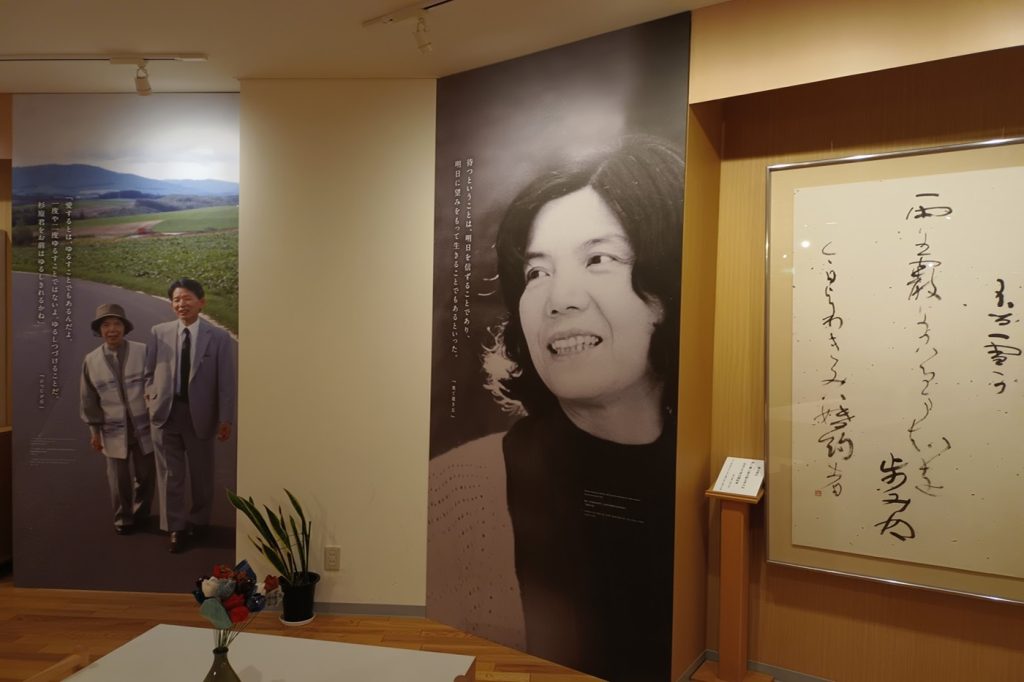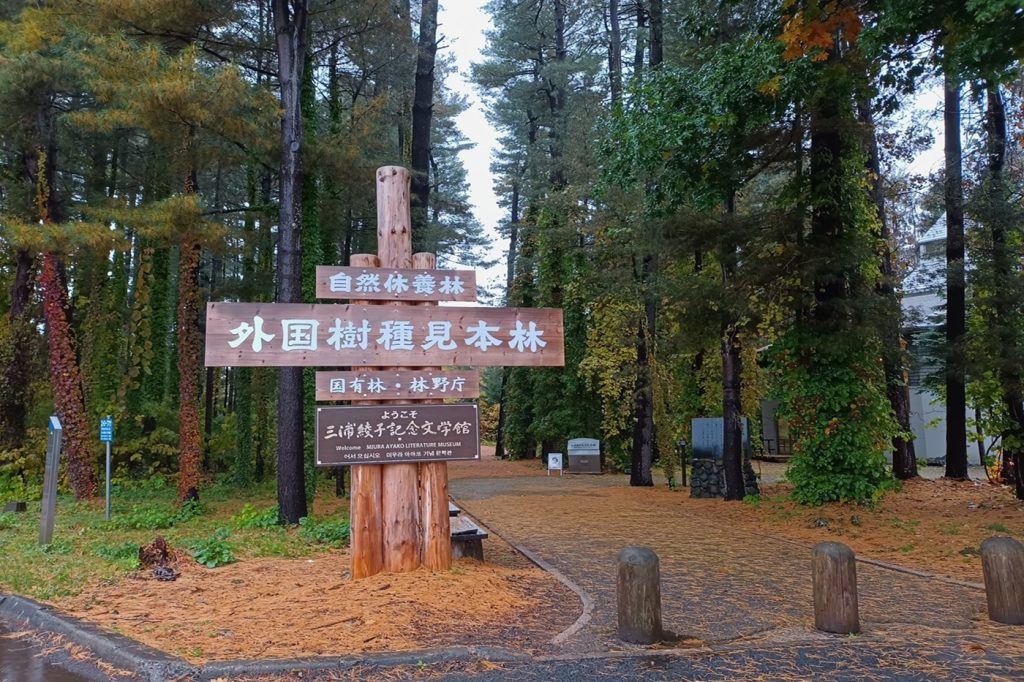Asahikawa, Hokkaido Oct.20 – 22, 2023
Ayako Miura Literature Museum and Mihonrin Park

Asahikawa is a landlocked city in Hokkaido, facing the Taisetsuzan Mountains with 2,291 meters in elevation in the south. Tourists go through the city to their destinations like Furano, Biei and Higashikawa. My destination is Asahikawa, where novel author Ayako Miura was born and lived most of her life. I love her literary works. She lived most of her life (1922- 1998) in the city and wrote many popular titles with Asahikawa and Hokkaido as a place of her stories. She started her career as a novel writer after her story “Hyouten” or Freezing point won the Asahi Shinbun newspaper’s competition in her 42. She wrote stories like Shiokari Touge, Deiryu Chitai, Kairei, Jyuko to name a few. I had known about her works since I was young. However, I never felt I would read them at that time. I started to read just a few years ago when I had a chance to read her essay “Michiariki” or “Wind is howling” about her life: her childhood, stint as a young school teacher during the World War II, self destructive life after the war, thirteen years in her bed of tuberculosis, an encounter with Christianity, death of her fiance, a fateful encounter with her future husband, marriage in her late 30s, starting career as novelist, etc. She writes story from different perspectives with Christian motifs behind like original sin and self-sacrifice. I was drown into her world without knowing.

Miura Ayako Literature Museum opened one year before her passing away in Mihonrin or Forest of Foreign Tree Species in 1998, where is the setting of her story Hyouten or Freezing Point. You would see towering high trees of Norway spruce at the entrance of the museum. On the second floor of the building, there is an exhibition room. When I visited that day, exhibition on her works affiliated with sea was being held. I learned she had depicted sea in many of her works though she spent most of her life in the landlocked city.
Her writing room is recreated in the adjacent building. She creates most of her stories and essays with the help of her husband Mitsuyo Miura. Leaving the National forestry agency, he helps her, who is physically frail, by taking dictation from her into manuscript paper, who is physically frail. They sit each other across the table. He does take dictation. On the other hands, he encourages her as a good supporter who understands her well.

“Mihonrin” or Forest of Foreign Tree Species is a place owned by the National Forest Agency and open to public. In the place of as large as 1,000 ha, many non native tree species from other frozen zones like North America, European and Asia were originally planted to see they are fitted with the climate of Hokkaido to grow. There is the Biei River run through along the dike in the park. Squirrels are living in the woods of “Doitsu Tohi”, Norway spruce; “Sutorobu Matsu”, Eastern white pines; “Yoroppa Karamatsu”, European larches etc. It is very beautiful place. Unfortunately, the day I visited was rainy and chilly for my early autumn outfit. I had to get a rain check to see around to my next visit.
Walking toward JR Asahikawa station in the cold rain in the late October, I could not but wonder how the winter in Asahikawa would be cold and long. Ayako Miura lives and struggles her challenging life in her 20s as a TB patient in the town. I am becoming to understand how she always thinks seriously how we should live our life. I wants to visit this city and this museum again at different seasons.